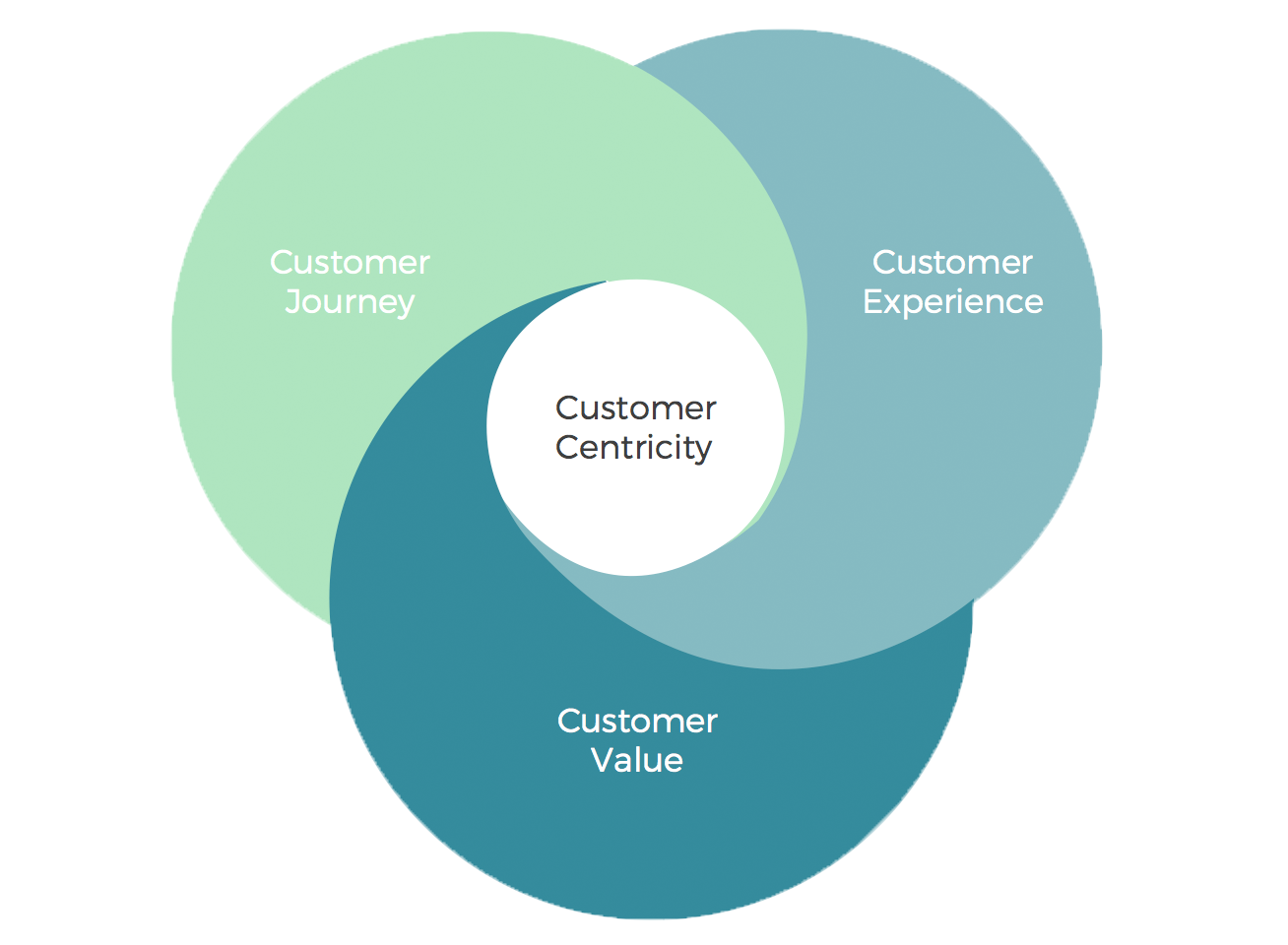Customer Centricity
What does Customer Centricity mean?
The concept of customer centricity is intended to increase Customer Satisfaction and Customer Experience in the purchasing process. In contrast to conventional marketing and sales concepts, customer centricity focuses on the customer and not primarily on the products or services.
However, customer centricity is much more than just a service or sales strategy: Companies should anchor this firmly in their corporate culture. The expectations and wishes of these form the beginning of your marketing measures. Customer Centricity begins with emerging interest of potential customers.
Consequently, Customer Centricity must be understood as a corporate philosophy, because it affects all areas of the company. Production must also be strictly geared to customer requirements. Starting with management, all employees should internalize the philosophy across all departments. Customer Centricity is of course particularly important in service and sales.
Potential customers can reach your company through various channels. These should be determined, monitored and optimized with a targeted Customer Journey Mapping. With a Customer Journey Map you are able to tailor your products and services to the needs of your customers – giving you an advantage over your competitors!
of customers recently made good experiences with a service team.
of customers are willing to spend more money for a very good service.
Source: CX Panel Survey 2019
Main Elements of Customer Centricity
This is a complex holistic approach, the implementation of which requires corresponding effort. Customer Centricity requires change at all levels of your organization. Of course, the idea of not focusing on the customer is fundamentally new – we know it as „the customer is king“.
However, the digital age and the concentration of many companies on new communication and sales channels on the Internet poses new challenges for customer centricity: The online technologies require a conceptual redesign of the customer journey and also affect customer-oriented work.
An important innovation here is that the first step of the customer journey today often involves the acquisition of personalized data of potential customers, who in a second step are used to influence a purchase decision.


Customer Empowerment
One of the reasons why companies are increasingly dealing with Customer Centricity Concepts, is the new power of customers in today’s markets: customers not only have buyer power but have a great influence on a company’s image through online product ratings, recommendations (or) non-recommendations.
The increasing trend to let customers participate in the design of new products is now sweeping through almost all industries. Therefore, you should give buyers plenty of room for product reviews to gain an advantage over your competitors.
oday customers are much more than just a „source of revenue“ as they have great influence on the success or failure of a company.
Customer Centricity as USP
Companies can get an advantage of their competitors by listening to their customers and taking sufficient care of them. This may be an important component of churn prevention.
Customer Centricity it is a leitmotif of Customer Relationship Management, coming from the idea that it is 5 to 15 times more cost-effective (depending on the industry) to retain an existing customers than to acquire a new one.
Customer-centric companies do not only benefit from stronger customer relationships, but are more likely to be forgiven in case something went wrong with a product or service, should it happen.
By working customer centric you increase customer loyalty and ensure long term success
We create interactive dashboards for you to view results of various surveys simultaneously and in real-time.

Data Collection
You invite participants to your survey yourself or we recruit your target group via our Online Access Panel.
Through our panel we can provide survey participants in over 15 countries.
Through our partner network, we have access to survey participants from over 100 countries.

Concept
We specify the questions for your market research project and provide questionnaire templates or develop a bespoke questionnaire for your research project.
We help you to define your specific target group.

Reporting
Get real-time results through our online reporting. Create, share and send reports.
Our Customer Success Team carries out in-depth analyses with your data and prepares meaningful reports in PowerPoint or any other format.
